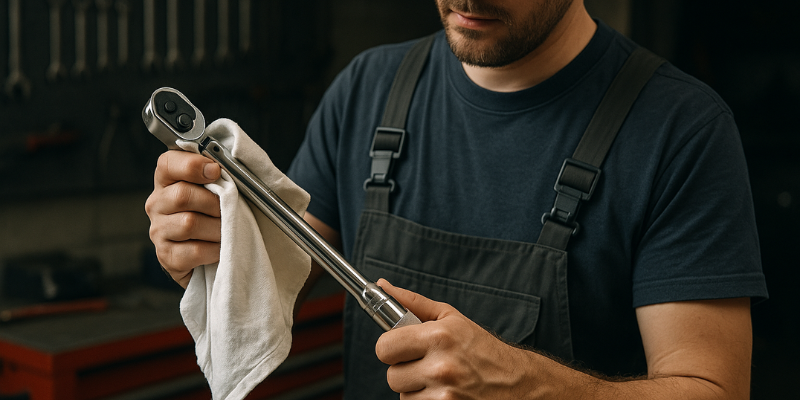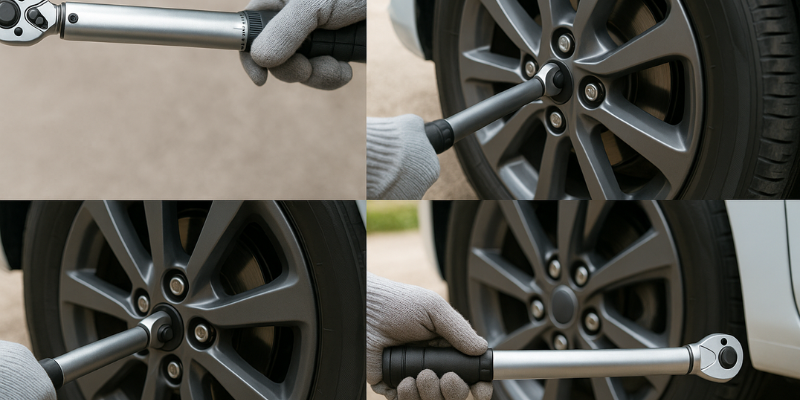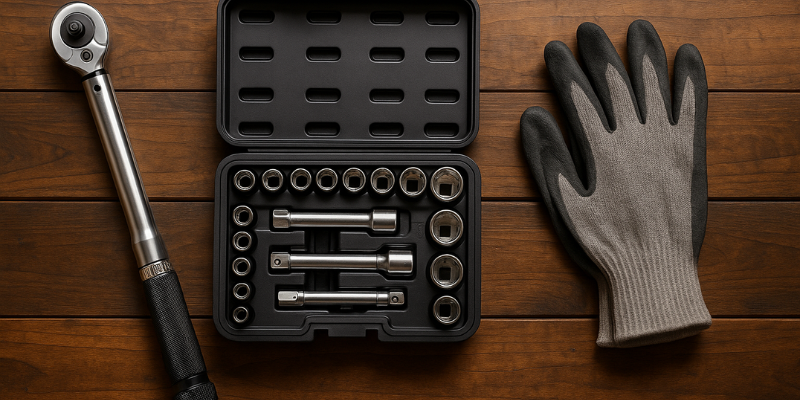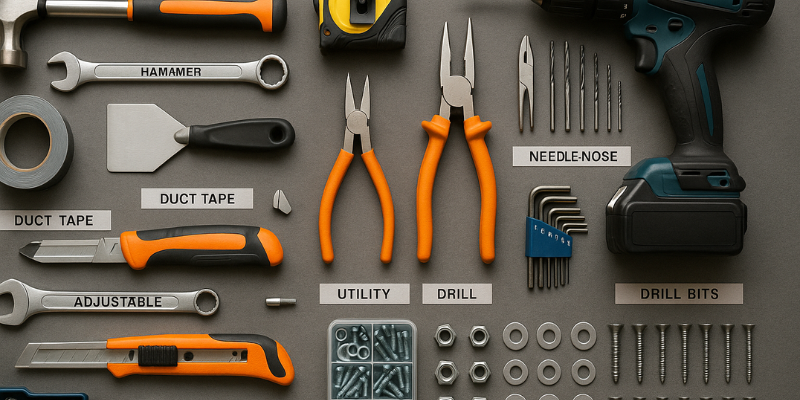Table of Contents
Toggle🧰 How To Use a Torque Wrench – Step-by-Step Guide (2025 Edition)
How to Use a Torque Wrench is a question every beginner DIYer asks—and mastering it can save your car, bike, or firearm from serious (and expensive) damage. Whether you’re tightening lug nuts, adjusting a carbon seat post, or installing a scope mount, torque accuracy is critical in 2025.
Too much torque can strip threads or crack materials like aluminum or carbon fiber. Too little torque can lead to parts loosening and causing safety hazards. A torque wrench solves that by applying a precise amount of rotational force—nothing more, nothing less.
In this guide, you’ll learn how to use a torque wrench properly, avoid common mistakes, and apply pro tips to get consistent, safe results. We’ve simplified every step so even total beginners can follow along confidently.
🧰 Tools You’ll Need
- Before getting started, gather these basic tools:
- Torque Wrench (click-type, beam-style, or digital)
- Socket Set (correct size for your bolts)
- Manufacturer’s Torque Specs (found in the vehicle/tool manual)
- Gloves (for grip and safety)
- (Optional) Anti-slip mat for workspace stability
Having the correct tools up front ensures safety and accuracy.
📐 Step-by-Step: How to Use a Torque Wrench Properly
🛠️ Step 1: Identify the Torque Specification

Always start by checking your owner’s manual or repair guide. Torque specs are usually listed in:
Newton-meters (Nm) – common in Europe/metric tools
Foot-pounds (ft-lb) – standard in the U.S.
Inch-pounds (in-lb) – used for small fasteners, scopes, and electronics
Confirm that your torque wrench is using the appropriate unit of measurement for the task.
⚙️ Step 2: Choose the Right Drive Size & Socket

Match the torque wrench’s drive size to your job:
- 1/4″ drive: Best for delicate work (scopes, electronics)
- 3/8″ drive: Common for brakes, oil pans, motorcycles
- 1/2″ Drive: Best suited for heavy-duty fasteners like lug nuts.
Use a matching socket and ensure it seats securely before proceeding.
🔧 Step 3: Adjust the Torque Setting

Click-type wrenches: Twist the handle until the scale aligns with your target torque. Lock it in place (if your model allows).
📲 Digital Torque Wrenches: Set your desired torque using the buttons, then lock it in place.
✅ Double-check your units (Nm vs ft-lb) before moving on.
🔩 Step 4: Tighten Slowly & Steadily

Fit the socket over the bolt and start applying pressure.
- For click-type: Turn slowly until you hear and feel a distinct click—that’s your target torque.
- For digital: The wrench may beep, vibrate, or flash once torque is reached.
Stop immediately once the target torque is achieved.
⛔ Step 5: Stop Immediately After Reaching Torque
Once the wrench signals completion, do not keep turning. Over-torquing beyond this point can cause permanent damage or even snap fasteners.
Pro Tip: Recheck the bolt with a second pass if needed—but never exceed the original torque value.
🧼 Step 6: Reset to Lowest Setting & Store Safely
Before putting the wrench away:
- For click-style wrenches, always return the handle to the lowest setting after use to maintain accuracy. This protects the internal spring.
- Clean the wrench with a soft cloth.
- Store in its case, away from moisture and debris.
Following these habits will extend your tool’s life and keep it calibrated longer.
❌ Common Mistakes to Avoid
Common Beginner Mistakes to Avoid:
- ❌ Using the wrong unit (e.g., Nm instead of ft-lb)
- ❌ Continuing to tighten after the click
- ❌ Not resetting the wrench after use
- ❌ Avoid using a torque wrench as a breaker bar—it can lead to permanent damage.
Torque wrenches are precision tools—not made to loosen rusted bolts.
✅ Pro Tips for Accurate Results
Want perfect torque every time? Use these tips:
- ✅ Calibrate your torque wrench once per year
- ✅ Use smooth, even force (no sudden jerks)
- ✅ Hold the handle at the center for accurate leverage
- ✅ Never drop your wrench—it can throw off the calibration
- ✅ Store in a case to protect the mechanism
Even small habits make a big difference in precision and durability.
💬 Frequently Asked Questions (FAQs)
Q1: Can I use a torque wrench in reverse?
Only if it’s dual-directional. Most click-type wrenches work in clockwise direction only.
Q2: How often should I calibrate it?
A: At least once per year, or after any heavy drop.
Q3: Is a digital torque wrench better for beginners?
A: Yes. It provides clear readouts, alerts, and avoids misreading analog scales.
Q4: Can a torque wrench be used for lug nuts?
A: Yes! Just use a 1/2″ drive torque wrench and follow your vehicle’s recommended torque range (typically 80–100 ft-lb).
✅ Final Thoughts:
Practice Makes Precision
Learning how to use a torque wrench properly is a game-changer for any DIYer, mechanic, or gear enthusiast. It protects your tools, preserves your vehicle, and saves you from costly mistakes.
Practice on test bolts, follow this step-by-step guide, and take your time. With proper technique and a little care, you’ll torque with confidence every time.
Please Also Read : Best Inch‑Pound Torque Wrench in 2025 – Top Picks & Reviews


